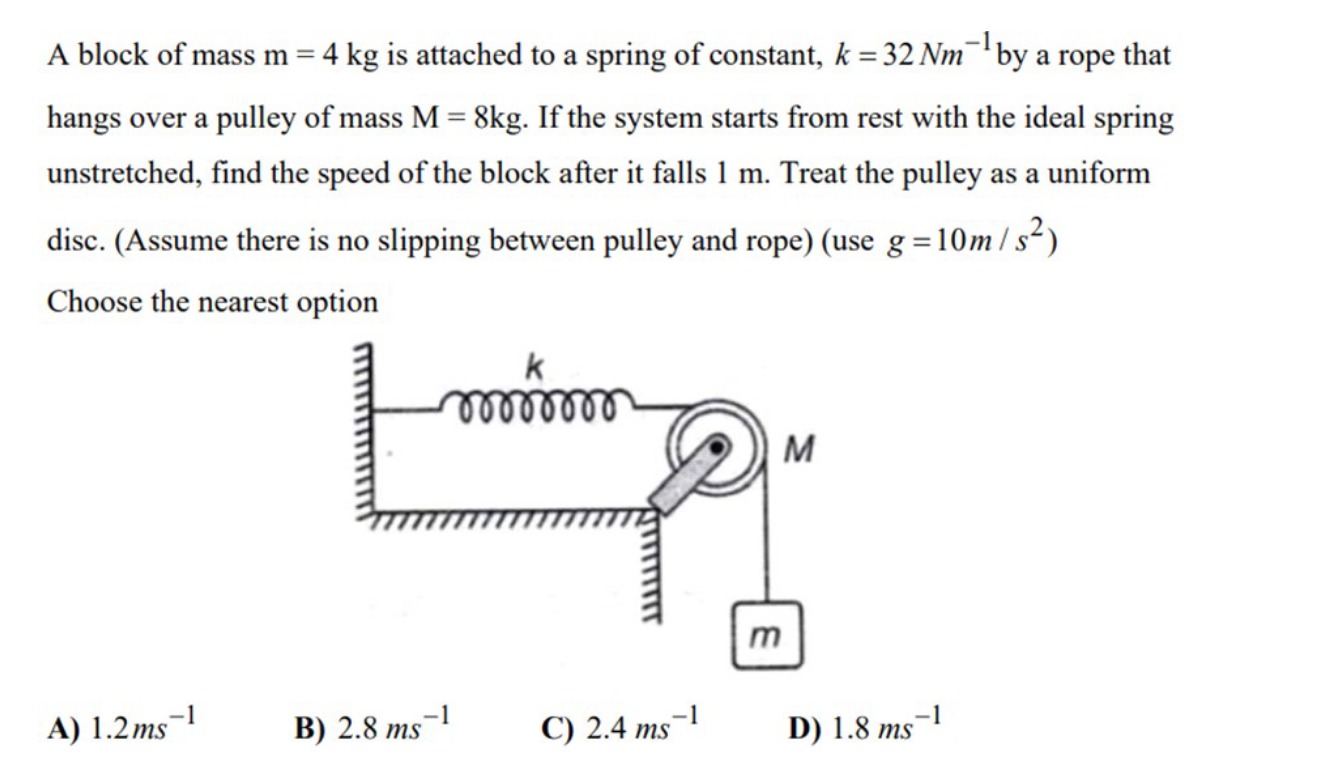Question
Question: A block of mass m = 4 kg is attached to a spring of constant, k = 32 $Nm^{-1}$ by a rope that hangs ...
A block of mass m = 4 kg is attached to a spring of constant, k = 32 Nm−1 by a rope that hangs over a pulley of mass M = 8kg. If the system starts from rest with the ideal spring unstretched, find the speed of the block after it falls 1 m. Treat the pulley as a uniform disc. (Assume there is no slipping between pulley and rope) (use g = 10m/s2)

A
1.2ms−1
B
2.8 ms−1
C
2.4 ms−1
D
1.8 ms−1
Answer
2.4 ms−1
Explanation
Solution
Solution:
Using energy conservation, the drop in gravitational potential energy equals the sum of kinetic energies (of the block and the pulley) plus the potential energy stored in the spring. Thus,
mgh=21mv2+21Iω2+21kx2For a uniform disc pulley,
I=21MR2andω=Rvso the rotational kinetic energy becomes:
21Iω2=21(21MR2)(Rv)2=41Mv2.Given:
- m=4kg
- M=8kg
- k=32N/m
- h=x=1m
- g=10m/s2
Substitute into the energy equation:
4×10×1=21(4)v2+41(8)v2+21(32)(1)2 40=2v2+2v2+16 40=4v2+16⟹4v2=24⟹v2=6 v=6≈2.45m/s.The nearest option is 2.4 m/s.
